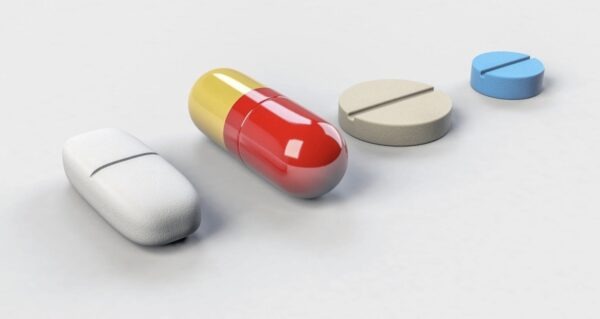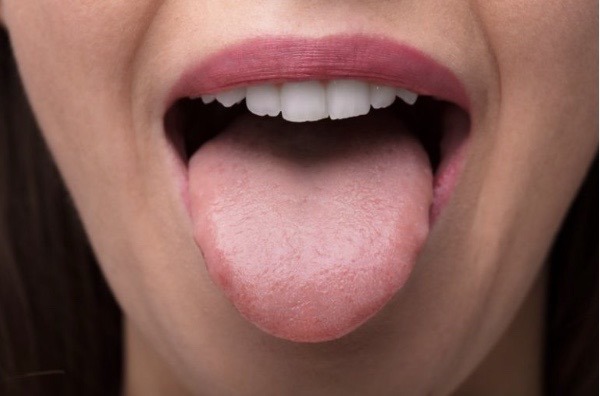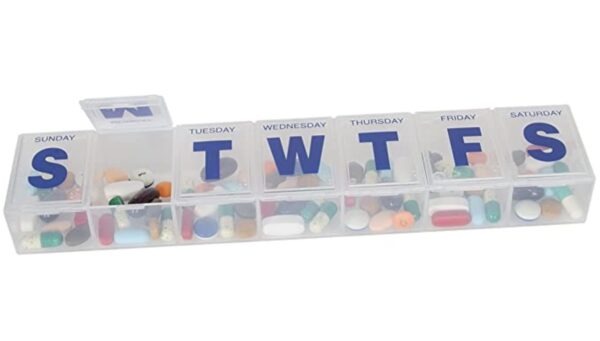Yes, I know, you’ve been swallowing things your entire life: breast milk (or formula), food––maybe a marble or small Lego. But, did you know that swallowing pills is different?
Let’s start with how NOT to swallow a pill.
Sorry, but Bruce Willis in all five Die Hard movies is incorrect. You don’t just take a small handful of aspirin, toss them into your mouth, and jerk your head back while swallowing.
Not to mention, if you have a dry mouth (xerostomia) or trouble swallowing (dysphagia), the pills will likely get stuck and make you choke. Or, they’ll just roll around your mouth and stick to the inner part of your cheek.
Mission NOT accomplished!
Okay, too many Hollywood references already. But, it is so easy to use the movies as examples of how not to swallow a pill. Bruce and Tom, I do love your movies…
So, what is the best way?
Let me first mention that these tips and tricks apply to all pills: prescription medications, over-the-counter medications, supplements, vitamins and other oral remedies (not dissolving or liquid formulations).

Pills can often be more comfortably swallowed with taken with something that is not water. Try “nectar-thick” liquids, applesauce, pudding, and the like. Or, even a mouthful of food that you have chewed––pop a pill in just as you are about to swallow.
It is easier for many people to swallow something with substance, because when it gets to the back of the mouth (posterior oropharynx) the tongue base has an easier time propelling it downward. Note to self: peanut butter doesn’t work very well.
Technique is also important.
Do not toss your head backwards and chug them down––you are not drinking beer. Actually, tilting your head forwards a little can really help avoid pills “going down the wrong way” (translate: ending up in your airway and causing lots of coughing and gagging).
I’ll never forget when my late grandmother was in the hospital. She was not used to taking many medications (even at the age of 105!) and tilted her head back, but couldn’t get her morning meds down. Gently redirecting her to tilt her head forward did the trick. Oh, and adjusting the hospital bed and pillow, so her head and neck weren’t scrunched so uncomfortably.
~ homage to Juliet (1905-2010)
This brings up another reason for trouble swallowing pills, a condition called presbyesophagus. No, it is not a religious term. It literally means changes in appearance of the esophagus (the long, muscular conduit leading from our mouth to our stomach), often due to aging. It typically causes a change in motility––ability of the muscles to work correctly, while swallowing.
As people age, there are many factors that can lead to the esophagus not working well––it is a muscular tube, and many things impact muscular function. So, if a pill is “not going down,” it can actually get stuck and cause a lot of problems.
Here’s where things get counterintuitive: bigger pills are easier to swallow than smaller pills.

Yes, I realize that those “horse pills” are daunting. But, swallowing a tiny pill––you know, the ones that when you drop on the floor you can’t find––can be tricky because, well, they are so tiny and hard to propel downward. Chugging some water afterwards can definitely help.
That all being said, I don’t mean to insult those who have pill phobia. There are some who are fearful about swallowing any type of pill, large or small.
One other tip is to ask your pharmacist or check online resources to see if your pill(s) can be crushed before taking. Not all pills can, and sometimes crushing will destroy how the medication or supplement is to be absorbed. So, be sure to find out.
Do you have a bitter pill to swallow?

And, yes, I mean an actual bitter pill, not the metaphorical one! Another trick is to learn where the taste buds are generally located on your tongue. If you carefully place a bitter pill (prednisone, for example) on the center of your tongue, you’ll get less of that horrible aftertaste upon swallowing.
Lastly, I’d encourage everyone who takes any medication, supplement or other oral remedy to get into the habit of naming each and every one before swallowing. Bonus: also naming why you are taking it, or for what condition.
Better yet, do this out loud, even if you are just talking to yourself!

I know that can be challenging to do while in the hospital when pills arrive in a tiny white paper cup. However, you can do this at home even if you use a pillbox for daily, weekly or monthly pills.
Your physician will thank you the next time you are reviewing your medication list and you don’t refer to “the little white pill.”
I recently had the pleasure (hah!) of swallowing 14 pills in the morning for a post-COVID neurologic complication, and tried doing this naming exercise. It was harder than it sounds! I identified each pill and what it was used for, before tossing the whole bunch in my mouth to swallow. Phew!
I will end with a personal opinion about gummy supplements and medications.
I actually find the huge gummy industry misleading. It really looks like candy to me (and to kids!) and often there are dyes and sugars that make the gummy more appealing (and to kids!). And, it is too easy to take one or two extra (same for kids!).
More is not better, even for a “good” supplement or pill. So, this just doesn’t pass under my safety radar without causing a blip.
: : :
Looking for more “How To” and “What To Do” information? Check out Dr. Baumgaertel’s YouTube channel (and subscribe) for more tips and tricks.
Postscript: Since this blog was first posted it has also appeared on MedMic, Doctors on Social Media, and MedPage Today’s Kevin MD.